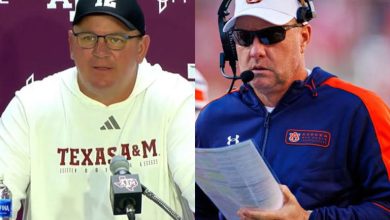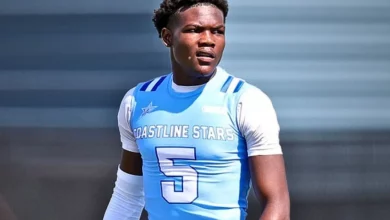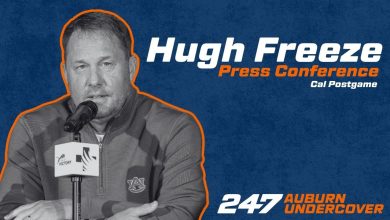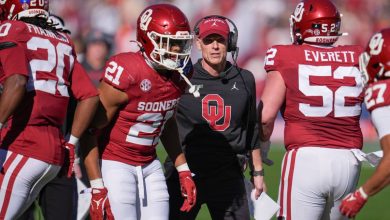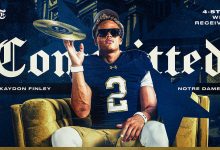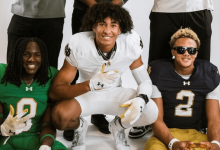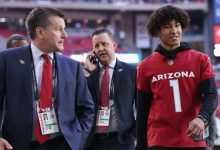Throwing it back to 1947 with Coach Leahy and the squad.
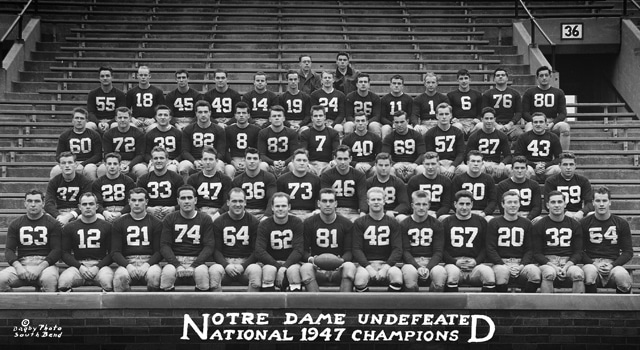
The 1947 Notre Dame Fighting Irish football team is widely regarded as one of the greatest squads in college football history. In many ways, the team epitomized the tradition, excellence, and perseverance that have come to define Notre Dame football. The 1947 season stands as a monumental moment in the program’s illustrious history, not only for its on-field achievements but also for the broader cultural significance of its success. Under the leadership of head coach Frank Leahy, the 1947 team embarked on a perfect, undefeated season that would secure Notre Dame’s 11th national championship and further cement its place as a powerhouse in the world of college football.
Before diving into the 1947 season itself, it’s important to understand the context in which Coach Frank Leahy’s Fighting Irish were operating. Leahy, a former Notre Dame player who had also played for the legendary Knute Rockne, took over as head coach in 1941. His tenure would go on to define an era of success for Notre Dame.
Leahy’s coaching philosophy was built around discipline, toughness, and a high-octane, up-tempo style of offense. His leadership helped transform Notre Dame into a perennial contender, with his teams being consistently ranked among the best in the nation. He understood how to motivate his players and maximize their talents, creating a formula for success that would make Notre Dame one of the most feared programs in the country.
By 1947, Leahy had already built a winning culture, and the Fighting Irish had become a dominant force in college football. Under Leahy’s guidance, the team had already won national championships in 1943 and 1946. However, 1947 would mark a season where Notre Dame would hit new heights, achieving perfection both in terms of record and the level of play.
The 1947 Notre Dame team was stacked with talent, led by some of the most accomplished and iconic players in college football history. The roster featured a mix of seasoned veterans and emerging stars, with players who would go on to have successful careers in both the NFL and coaching. One of the most notable aspects of the team was its balance. Notre Dame was not just strong in one phase of the game; they were exceptional in all facets, combining a stifling defense, a versatile offense, and a special teams unit that could flip the field when necessary.
At the heart of Notre Dame’s offensive success in 1947 was a potent running game led by fullback and captain, Leon Hart. Hart was a force to be reckoned with, a 6-foot-4, 225-pound powerhouse who could bulldoze through defenders with his size and speed. Hart’s performances during the season were nothing short of spectacular, and his leadership on and off the field was crucial to the team’s success. He was not just a physical presence; he was also a smart and disciplined player who could execute Leahy’s offense to perfection. Hart was a crucial part of the running attack, contributing significantly both in short-yardage situations and in big plays that broke open games.
Backing Hart up in the running game was Jim Martin, another key player who complemented Hart’s power with finesse and speed. Martin, a halfback, was capable of breaking long runs and setting the tone for the offense with his quickness. The combination of Hart’s bruising running and Martin’s speed gave Notre Dame one of the most dynamic backfields in the nation.
The Irish also had a strong passing game in 1947, led by quarterback Johnny Lattner. Lattner, a dual-threat quarterback with an exceptional arm and the ability to make plays with his legs, was a key component of the team’s versatility. He could keep opposing defenses off balance with his ability to throw the ball downfield or scramble when needed. Lattner’s leadership and decision-making ability were integral to the offense’s success. His ability to manage games, stay calm under pressure, and deliver big throws when necessary made him one of the top quarterbacks in college football at the time.
The offensive line was also exceptional, anchored by Dick Luebke and George Connor, two stalwarts who helped create running lanes for the backs and gave Lattner ample time to make plays. The offensive line’s ability to dominate in the trenches allowed the Fighting Irish to control the clock and wear down opposing defenses, setting up big plays later in games.
On the defensive side of the ball, Notre Dame was just as dominant. Led by defensive captain George Connor, the Irish defense was one of the toughest in the nation. Connor was a hard-hitting linebacker who played with an intensity and aggression that set the tone for the entire defense. His ability to read offenses and make tackles at key moments was critical to Notre Dame’s success. Connor was not only a standout at linebacker but would also go on to have a successful career in the NFL, where he would eventually be inducted into the Pro Football Hall of Fame.
The defensive line, led by players such as Bobby Gaiters, was another strength of the team. The line was able to generate pressure on opposing quarterbacks while also shutting down the running game. The front seven was physically imposing, and they made life difficult for any offense that faced them. With strong tacklers like Jack Lally and Paul Jankowski in the linebacking corps, and a defensive secondary that featured players like Jim Martin and Lattner, Notre Dame’s defense was well-rounded and capable of shutting down any offense it faced.
One of the hallmarks of the 1947 team was its ability to adjust. Defensive coordinator Frank Ryan instilled a flexible scheme that allowed the team to adapt to the strengths of opposing offenses, whether that meant shifting to a more aggressive pass rush or tightening up coverage in the secondary. The versatility of the defense made it one of the most feared units in college football.
While Notre Dame’s offense and defense were well-established, it was also the special teams unit that played a significant role in the team’s success. Johnny Lattner, who was instrumental as a quarterback, also played a key role in the return game, where his speed and agility were invaluable. Punter Bob Williams and kicker Joe Vargo were crucial in flipping the field and giving the defense favorable positions. Special teams were a well-coached unit that played its role in helping Notre Dame control the tempo of games.
The 1947 season was nothing short of spectacular for the Fighting Irish, as they went undefeated, finishing the regular season with a perfect 9-0 record. Their season was marked by dominant wins, thrilling comebacks, and a level of consistency that made them the undisputed national champions.
Notre Dame opened the season with a 38-7 victory over Indiana, a strong statement that would set the tone for the remainder of the year. The Irish followed up with a series of commanding wins over the likes of Purdue, Navy, and Pittsburgh. Each victory showcased the depth and talent of the squad, with the offense racking up points and the defense stifling any offensive threat. In particular, the 38-0 shutout of Pittsburgh in late October was a standout performance, where the Irish defense simply overwhelmed the Panthers, while the offense moved the ball at will.
One of the most thrilling moments of the season came in the game against Army, which was one of the most highly anticipated matchups of the year. Army was ranked No. 2 in the nation, and the game was expected to be a test of Notre Dame’s mettle. The Irish did not disappoint. They played with poise and determination, winning the game 48-0 in a statement victory. The performance against Army was a defining moment for Notre Dame and demonstrated their dominance on both sides of the ball.
Throughout the season, Leahy’s squad displayed resilience and unity, even when the stakes were high. When the team faced stiff competition, like their matchup with USC, they delivered under pressure. The Fighting Irish would go on to finish the season with a dominant victory over SMU in the Cotton Bowl, sealing the national championship and further establishing themselves as the best team in college football.
The 1947 season remains one of the pinnacle achievements of Notre Dame football. It not only brought the team their third national title under Frank Leahy but also helped solidify the Fighting Irish as one of the most storied programs in college football history. Coach Leahy’s leadership, combined with the talent and drive of the players, produced a team that was nearly unstoppable.
In the years following the 1947 season, many of the players would go on to successful careers in the NFL, while others would stay involved in football as coaches. Leon Hart, who was a dominant force for Notre Dame in 1947, went on to have a successful professional career and was inducted into the College Football Hall of Fame. Johnny Lattner won the prestigious Heisman Trophy in 1953, further solidifying the legacy of the 1947 team. Meanwhile, George Connor went on to be a standout player in the NFL and is considered one of the greatest linebackers of his era.
Frank Leahy’s ability to recruit, develop, and motivate his players led to a golden era of Notre Dame football, and the 1947 team stands as one of the most iconic in college football history. Their perfect season remains a model of excellence and serves as a benchmark for future generations of Notre Dame players and coaches.
As the years pass, the 1947 Notre Dame team is remembered not only for their on-field dominance but for the legacy they left behind, both in terms of championships and the blueprint they created for future success. Notre Dame football, as it stands today, owes much to the heroes of that legendary season—a season that remains etched in the annals of college football history as a defining moment for the Fighting Irish.



